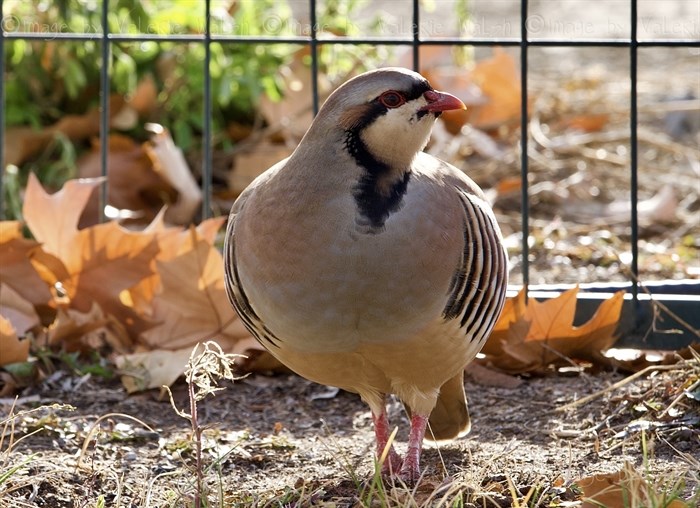
This chukar was photographed in Kamloops by Valerie Walsh.
Image Credit: SUBMITTED/ Valerie Walsh
December 26, 2023 - 7:00 AM
Chukars are some of the more unique birds in the Thompson Okanagan region, in both appearance and behaviour, and are often the subject of wildlife photography.
The birds have noticeable black bar patterns on their sides, are known to run instead of fly and have a characteristic, cackling call that sounds like kakakaka-chuKAR-chuKAR-chuKAR. Coveys can often be seen running around through the brush on dry, steep hillsides.
Avid Kamloops photographer Valerie Walsh loves observing the funny partridges and tries to get photos of them every year.
“They have such cute voices when they converse together and their antics are priceless as they interact,” she said. “They chortle and chatter amongst themselves as they are feeding and running, making the tiniest little gurgling sounds, it’s endearing.”
Chukars were introduced to BC in the mid-1900s for hunting purposes and are originally from southeastern Europe, northern India, China and Mongolia, according to the University of British Columbia.
The birds live in dry, open, rocky places, on grasslands and sagebrush benches near rocky outcrops and cliffs. In BC, they are most common south of Okanagan Falls in the Okanagan Valley and from the Kamloops area south and west to Lytton.
They eat small seeds, green vegetation and insects, and foraging coveys move continuously throughout their habitat, with most activity in the morning and late afternoon.
Like with many bird species, mating starts with courtship where the males show off to attract the female. Male chukars will approach females tilting their heads while turning sideways to show the black bar patterns on the flanks. He’ll circle the female sometimes with his head bowed and wings drooped, often pecking at the ground. The birds are monogamous breeders.
The nests are on the ground under shrubs or grasses, shallowly scraped and lined with grasses and leaves. Eggs are laid in spring and hatch in early summer.
Their large size and distinct markings make chukars easy to identify from other species of partridge in the province.

Kamloops photographer caught this chukar on camera near Kamloops and called it "the town crier."
Image Credit: SUBMITTED/ Valerie Walsh
READ MORE: iN PHOTOS: Beautiful backyard birds brighten up winter in Kamloops, Okanagan
For Walsh, identifying them isn’t the issue, catching them on camera is the challenge, the birds are fast.
“Usually when I see them they are running quickly in the other direction, like most birds they don’t like people,” she said. “It’s not often I can photograph one standing still.”
To contact a reporter for this story, email Shannon Ainslie or call 250-819-6089 or email the editor. You can also submit photos, videos or news tips to the newsroom and be entered to win a monthly prize draw.
We welcome your comments and opinions on our stories but play nice. We won't censor or delete comments unless they contain off-topic statements or links, unnecessary vulgarity, false facts, spam or obviously fake profiles. If you have any concerns about what you see in comments, email the editor in the link above. SUBSCRIBE to our awesome newsletter here.
News from © iNFOnews, 2023